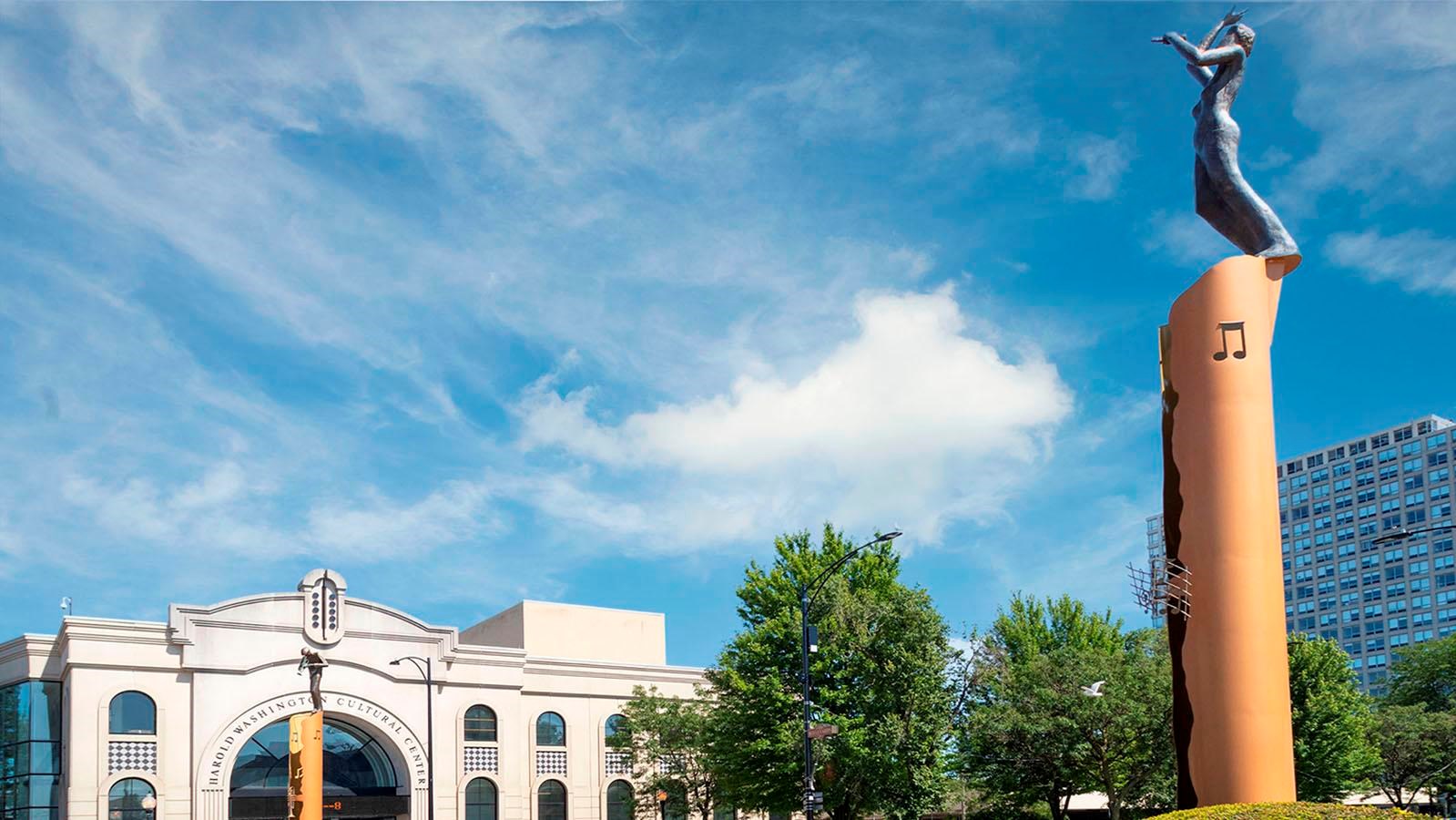Last updated: October 2, 2024
Place
Bronzeville-Black Metropolis National Heritage Area

Victor Powell
Quick Facts
Location:
Chicago, Illinois
Significance:
The tells the story of the Great Migration. Because of the history-changing exodus of six-million African Americans to the North between the years of 1916 and 1970, the course of American History changed significantly. This historic area represents African American achievements in arts and culture, business and entrepreneurship, politics, sports, and recreation within the city. Bronzeville underscores the importance of its historical heritage by actively engaging in tourism and community initiatives. Our story includes the history of African Americans in Chicago and their contributions to American History overall.
Designation:
National Heritage Area
Congress designated the Bronzeville-Black Metropolis National Heritage Area in 2023. The Black Metropolis National Heritage Area Commission acts as the local coordinating entity. They work along with community entrepreneurs called the Bronzeville Community Development Partnership to continue the goal of urban development and mobility, marketing, and tourism of Bronzeville. Stretching from Chicago's South Loop to Woodlawn (18th Street to the north, 71st street to the south, Lake Michigan to the east, Bronzeville-Black Metropolis National Heritage Area and Canal Street to the west), this NHA contains assets that convey the story of the Great Migration and Civil Rights Movement both locally and nationally. Namely, the Bronzeville Historic District, a Chicago Landmark District designated in 1998, consists of eight historic buildings and a monument. These historic buildings have been preserved by preservationists over a period of more than 20 years. This preservation continues today as the Bronzeville-Black Metropolis NHA collaborate with other community organizations to maintain these efforts.
In the 20th century, the Bronzeville area of Chicago became known as Black Metropolis, a mecca of African American business, arts, music and culture, politics and more that would influence our nation. The Bronzeville-Black Metropolis NHA plays a distinct role in telling the story of the growth of the National Labor Movement through the efforts of African Americans, the shaping of the Civil Rights movement, and the creation of civil rights organizations. Emmett Till and Mamie Till Mobley National Monument showcase the contribution these figures made to the American Civil Rights Movement. Bronzeville is also filled with homes and places that celebrate the music, including Blues, Jazz, and Gospel Music, all of which came to Chicago due to the Great Migration.Bronzeville will continue to emphasize preservation, education, outreach, and conservation, and accessibility in order to teach the next generation about its community history, while also building up the community through economic development and tourism. Bronzeville has found a way to incorporate history and community to create a vibrant cultural legacy that honors its past while fostering a strong sense of unity and progress for the future.While this area of Chicago was historically small, the migration to it had a significant impact on a national scale, shaping the nation's understanding of Black urban life and segregation in the North.
In the 20th century, the Bronzeville area of Chicago became known as Black Metropolis, a mecca of African American business, arts, music and culture, politics and more that would influence our nation. The Bronzeville-Black Metropolis NHA plays a distinct role in telling the story of the growth of the National Labor Movement through the efforts of African Americans, the shaping of the Civil Rights movement, and the creation of civil rights organizations. Emmett Till and Mamie Till Mobley National Monument showcase the contribution these figures made to the American Civil Rights Movement. Bronzeville is also filled with homes and places that celebrate the music, including Blues, Jazz, and Gospel Music, all of which came to Chicago due to the Great Migration.Bronzeville will continue to emphasize preservation, education, outreach, and conservation, and accessibility in order to teach the next generation about its community history, while also building up the community through economic development and tourism. Bronzeville has found a way to incorporate history and community to create a vibrant cultural legacy that honors its past while fostering a strong sense of unity and progress for the future.While this area of Chicago was historically small, the migration to it had a significant impact on a national scale, shaping the nation's understanding of Black urban life and segregation in the North.
Historic Sites and Points of Interest:
- Bronzeville Trail
- Emmett Till and Mamie Mobley-Till National Monument
- Monument to the Great Migration
- Ida B. Wells Monument
- Roberts Temple Church
- Muddy Waters museum
- Quinn Chapel
- Camp Douglas Civil War Pop-Up Exhibit
Notable People:
- Ida B. Wells
- Emmett Till and Mamie Mobley-Till
- Major Taylor
